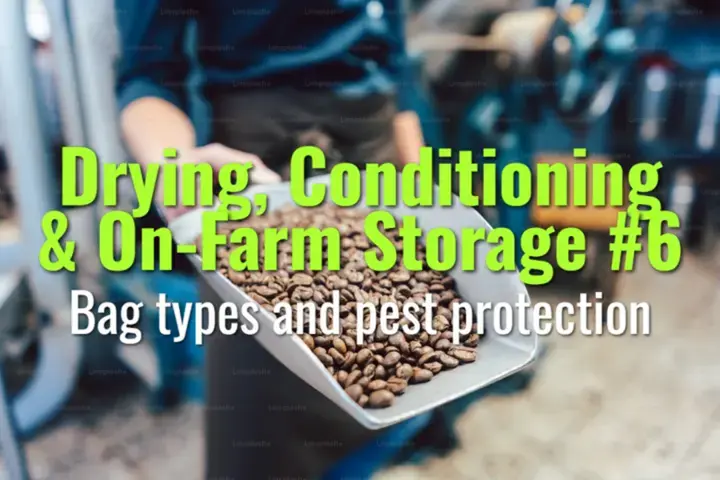Bag types and pest protection
This topic explains the different bag types used for storing coffee in parchment or green form, their strengths and weaknesses, and the best practices for protecting against pests during storage.
- Coffee Basics Nerds
- 2 min read
Article 6 of 12 in Drying, Conditioning & On-Farm Storage/

Common Bag Types
1. Jute or Sisal Bags
- Traditional, breathable natural fiber sacks.
- Pros: Affordable, biodegradable, widely available.
- Cons: Susceptible to humidity, odors, and pest infestation.
2. Polypropylene Bags
- Plastic woven bags used for bulk storage.
- Pros: Durable and resistant to tearing.
- Cons: Poor breathability, risk of condensation and mold.
3. Hermetic Bags (e.g., GrainPro, Ecotact)
- Multi-layer plastic liners inside jute bags.
- Pros: Airtight, protect against pests, moisture, and odors.
- Cons: Higher cost, need careful handling to avoid punctures.
4. Big Bags / Bulk Containers
- Large capacity bags or silos used in commercial-scale storage.
- Pros: Efficient for high volume.
- Cons: Harder to manage lot separation, require infrastructure.
Pest Protection Strategies
- Rodents: Use raised pallets and keep bags away from walls.
- Insects (weevils, beetles): Hermetic storage deprives pests of oxygen.
- Mold & fungi: Keep humidity <65% and moisture at 10–12%.
- Sanitation: Regularly clean warehouses; remove old organic material.
- Physical barriers: Nets, sealed doors, and screens to exclude animals.
Best Practices
- Combine jute bags with hermetic liners for optimal balance of breathability and protection.
- Stack bags on pallets to prevent ground contact.
- Rotate stock (first in, first out) to ensure freshness.
- Regular inspections for pests or damage.
Quality & Market Implications
- Clean, pest-free storage ensures cup quality and food safety.
- Many certifications (Organic, Fairtrade, Rainforest Alliance) require pest management protocols.
- Poor bag choice or pest control can lead to rejections at export.
Lasting Importance
Bag types and pest protection are critical in post-harvest coffee care. Choosing the right storage system safeguards against losses, maintains bean integrity and flavor, and ensures compliance with specialty buyer expectations.
You might also like:
- Tags:
- Lasting Importance
- Best Practices
- Cup Quality
- Food Safety
- Rainforest Alliance
- High Volume
- Market Implications
- Post Harvest
- Jute Bags
- Rotate Stock
- Organic Fairtrade
- Certifications Organic
- Hermetic Bags
- Grainpro Ecotact
- Quality Market
- Choosing Right
- Regularly Clean
- Fairtrade Rainforest
- Inside Jute
- Bags Grainpro
- Multi Layer
- Pest Control
- Plastic Liners
- Hermetic Liners
- Ensures Compliance
- Bean Integrity
- Practices Combine
- Pest Free